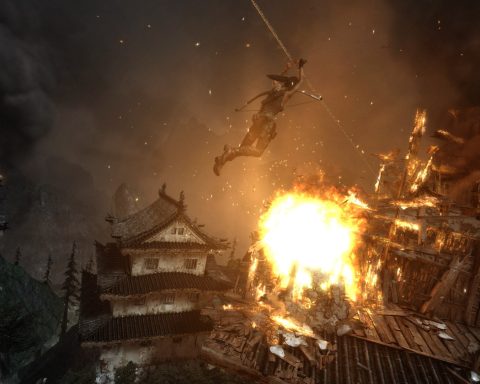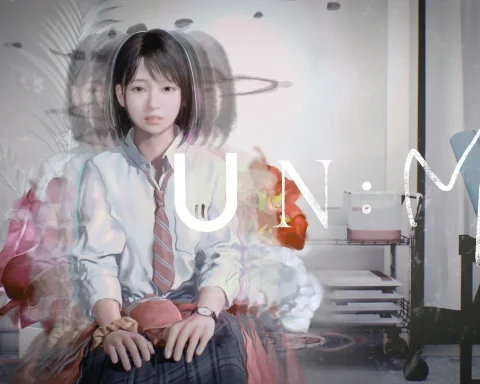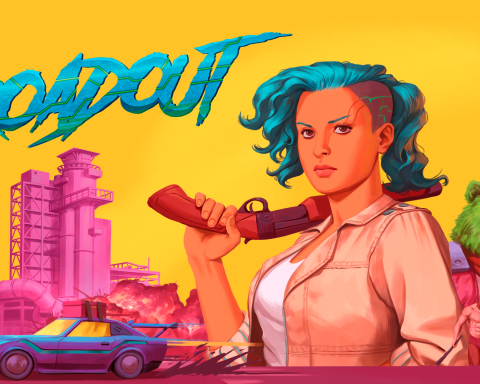The mere title of The Legend of Legacy implies grandeur. “Legend” refers to stories told generation after generation, while “legacy” represents the generations themselves. Needless to say, I came into this game expecting great things.
The Legend of Legacy is a JRPG developed by Furyu, with a North American release courtesy of Atlus and an upcoming European release thanks to NIS America. It is considered by many to be a spiritual successor to the SaGa series, although due to its nature as a spiritual successor and not an actual one, its relationship to the long-running SaGa series has very little to do with the gameplay and nothing to do with the story.
Related reading: The Legend of Legacy confirmed for Europe, courtesy of NISA.
The game also has some very impressive names to its credit. Several people involved with the SaGa series also worked on The Legend of Legacy, including designer Kyoji Koizumi. Chromo Trigger writer Masato Kato also penned the script for The Legend of Legacy, and the game’s score is by Final Fantasy XIII composer Masashi Hamauzu. Tying up the all-star list of people involved with The Legend of Legacy is Masataka Matsuura, a former staff member at Level-5 (the company that created the wonderful Ni No Kuni).
So let’s take all of this into account: the game’s has a grand title, it’s a spiritual follow-up to the SaGa series, and it has some of the greatest names in game development on its roster. The Legend of Legacy also doubled the first week sales of all previous Furyu games when released in Japan earlier this year. This game oozes potential, which also creates a rather large possibility that it could never live up to said potential. Actually, the potential almost scared me off, especially due to the game’s relationship to SaGa.
I have never been so happy to ignore that fear and be excited for a game. The Legend of Legacy is everything you could ever want in a JRPG, but with the added bonus of nearly complete freedom to play how you want from start (when choosing characters) to finish (which is reached after you decide where to go and when to go there). It is filled to the brim with everything wonderful about old-school JPRGs, such as random encounters, turn-based combat, and party members written into the story. And the grinding… oh my, so much grinding I started dreaming about it.
The Legend of Legacy has a story that sounds as though it’s from a fairy tale. The island of Avalon has awoken after a long slumber, and adventurers are travelling there seeking fame and fortune. Nobody knows of Avalon’s past, but there is currently a king there to order the adventurers about in the most vague manner possible.
It all begins with the choice of what character will be the protagonist in your story. There is Bianca, a young girl with amnesia; Garnet, a templar; the stunning Eloise, an alchemist; Meurs, an elementalist; Owen, a mercenary; Liber, a treasure hunter; and last but not least, Filmia the singing frog prince. I choose Filmia for my first experience with The Legend of Legend due mostly to his singing, although Eloise was a close second (for the alchemy, I swear!).
Filmia, as with all the other characters, has his own reasons for going to Avalon. Along the way, he meets two other people travelling the same road. These are two other characters from the initial pool, and who it is varies on who you’ve chosen as protagonist. The story is essentially the same from all points of view, minus the handful of personal touches along the way based on the lead character; that being said, I actually quite enjoyed spending the time to learn what brought each of them to the long-long island.
The island of Avalon comprises of one city and several uninhabited locales to explore. The city is quite bare: it houses only a dock, a shop stand, a bar, and a hotel. The dock allows you to trade goods with other players via StreetPass – the more you can afford to spend on a boat, the better the goods will be (based the nice man at the dock says, as I haven’t had the pleasure of encountering another player yet). In the bar, you can talk to others who have come to explore Avalon. The two places you’ll spend the most time are the shop and the hotel. The shop sells weapons, armour, and healing items. There are specials that change often, which is where the more rare items can be purchased. The hotel is where there is a save point (there are very few in the game, but there is a quick-save feature which I will discuss later), but more importantly it is where your party can sleep and heal.
Once your party ventures forth into the unknown, it is pure JRPG wonderfulness. As you explore, enemies will attack. Often they can be seen and avoided (if that’s what you like to do… for me, I won’t waste a single opportunity for the experience) but if you chose to linger they will attack. Sometimes enemies jump out of nowhere, and sometimes they appear while you’re searching sparkling spots for valuables. You’ll want to kill them all, over and over again, every time you pass through that area of the map and they respawn. Trust me. Ridiculous amounts of time will be spent killing the same things over and over, and that is okay. For one, it allows you the opportunity to explore further and find what you may have missed. For another, it’s part of the JRPG experience that many (myself included) have come to love.
Fighting enemies is another place that The Legend of Legacy shines brightly with classic JRPG elements. The enemies are monsters, and resemble insects, animals, or elements (fire, water, etc.). Each character has HP (health) and SP (special attacks) that can be depleted by being attacked or using special/magic attacks. The combat is turn-based, which I have zero qualms about because I firmly believe the best RPGs have turn-based combat. You can choose what formation to have your characters in; they can all attack on equal grounds or one can be at the forefront taking the brunt of enemy attacks. You can also run from battle, although that will set you back to the beginning of the map for the area you’re in. If one character dies in battle, they will be revived automatically afterwards but with less health until they can sleep at the hotel. If all characters die… well, I haven’t had that happen yet, being honest.
The current party is able to be equipped with weapons, armour, and other goodies. These items can be found by exploring the mysterious island or by purchasing them in town. Items level up the more they are used; the more they are used, the more powerful they become. Aside from items, there are also shards hidden across Avalon, and these shards have a big impact on the game. They are often elemental; for example, a water shard. Each shard can be used in combat by giving it to a character in the party to hold. As they are used, they allow for more powerful spells. Every variety of shard does a special spell; again using water as an example, it allows your party to regenerate a small amount of health in battle. Shards are also sometimes capable of interacting with your surroundings.
Perhaps my favourite part of the game is map completion. I am a perfectionist when it comes to video games, and I aim to complete each one as close to 100 per cent as possible. In The Legend of Legacy, there is no map at the onset. Instead, you have to explore each part of Avalon and the maps are filled in along the way. The more a map is complete, the more you can sell it for. But there’s a catch: you can only sell each area’s map once. The shopkeep will tell you how close to complete it is before you confirm to sell it. Trying to uncover every square inch of Avalon leads to many enemy attacks, but the rewards are worth the work.
It may seem strange that this far into a very lengthy (okay, and possibly longwinded) review into a JRPG, I have barely mentioned the story. There are a few different reasons for this. One, I have only experienced a handful of the possible protagonists thus far, and cannot fairly comment on or compare the remaining narratives. Two, The Legend of Legacy doesn’t have a story as JRPGs traditionally would: there is no point A to point B, it’s more about exploring the world on your own to find answers to questions that appear along the way. In fact, there is very little dialogue. In that manner, there is absolutely no hand-holding; it’s a blessing when you feel like exploring freely, but a curse when you need to wander around aimlessly for hours trying to find the place that would continue the story.
The graphics and music are also not to be ignored. The graphics are best described as whimsical. As your party explores, the world around the pops up out of nothing as though you were wandering around in a pop-up book. The colours are soft yet bright, resembling a watercolour painting. The look of the game actually reminded me of Beyond Eyes, but to a much smaller scale. The music was equally whimsical, and it was easy to get lost in it. The little voice work there was in the game was okay; there was only the narration, and I could take it or leave it. Often, I would find myself skipping it because I could read faster than the narrator could talk, but that’s just my own impatience at work instead of a problem with the voicework.
Thank goodness The Legend of Legacy is on a portable system, because once you start you’ll find time anywhere to play: you’ll get in a few more rounds of grinding on the bus, or a few steps closer to your self-imposed goal while waiting in line in a government office. The classic JRPG elements combined with the characters, the story, the graphics, and the music make this a game not to miss out on.
– Lindsay M.
News Editor












